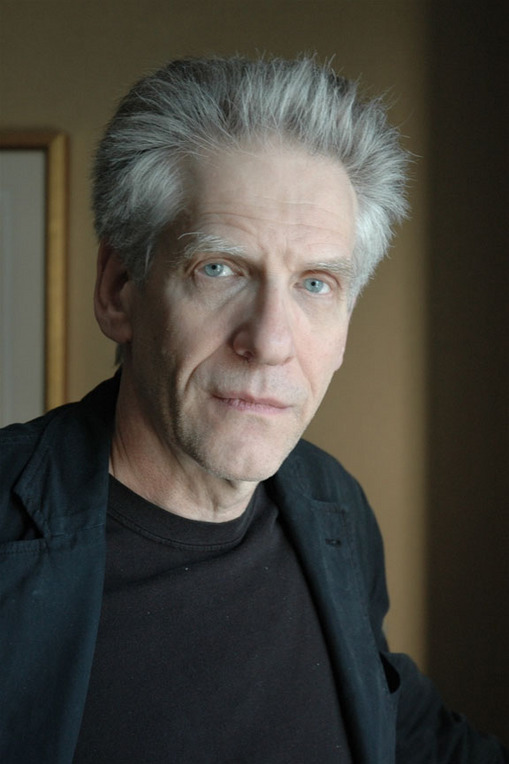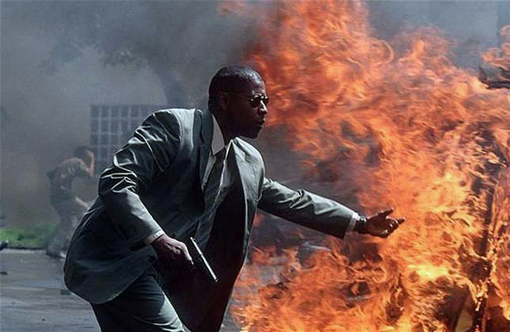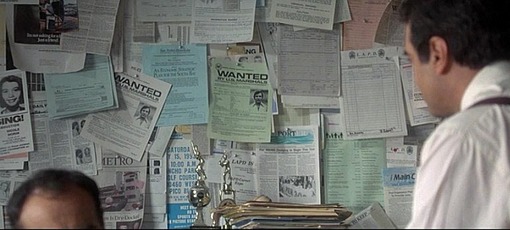View image Hejira: The refuge of the road, a prisoner of the white lines on the freeway…
Joni Mitchell is a gifted musician, a great songwriter, and a damn fine actress. (People always talk about her lyrics, but its her performances that make those words sing.) She’s also a terrific director and cinematographer and all-around filmmaker and critic — and I’m taking exclusively about her recorded music. I’ve been thinking about this for a long time, and then a thread on girish’s blog a while back made me want to write about it. So, here goes. A few of my favorite examples, music and lyrics, analysis and critique (hers), composition and montage:
How about the camerawork in this shot from “The Boho Dance” (from “The Hissing of Summer Lawns”):
A camera pans the cocktail hour
Behind a blind of potted palms
And finds a lady in a Paris dress
With runs in her nylons
I see this as a horizontal dolly shot more than a “pan.” And not too much zeroing in on the legs. Maybe a tilt down as the lady drops an hors d’oeuvre, just so you have a chance to notice. Or maybe somebody seated in the foreground spots the flawed stockings from across the room and there’s a bit of rack focus to the lady’s gams. Maybe we just see her in a full shot, with her back to us, standing in a cluster of other people who can’t see the runs that are turned toward the camera. Or, if she’s seated, perhaps she crosses or uncrosses her stems briefly, allowing us a glimpse of the telltale hosiery. There are lots of ways to shoot it, but Mitchell tells you what the shot needs to convey so you can come up with the specific compositions yourself.
Then there’s this amazing zoom out from “Hejira” (song and album — my personal favorite):
White flags of winter chimneys
Waving truce against the moon
In the mirrors of a modern bank
from the window of a hotel room
You see the snow-topped chimneys and the moon and you feel the mood. Then your perceptual awareness shifts. The tone drops a bit and you realize what you’re seeing is a reflection off a bank building. The music slips higher and you pull back even further. These images aren’t just objectively out there. You’re watching them from the window of your hotel room.
It’s a song about traveling, about getting away, about returning to oneself after the “possessive coupling” of a recent love affair. But it’s been fairly impressionistic (“all emotions and abstractions,” as she sings in “Song for Sharon”) until this point: “I’m traveling in some vehicle/I’m sitting in some cafe.” It’s an anonymous landscape, dotted with specific observations: “… as natural as the weather/In this moody sky today,” or “snow gathers like bolts of lace/Waltzing on a ballroom girl. And then, at the end, you (and the narrator) are actually back in the world, at a specific place at a particular moment, with the understanding that, even as a “defector from the petty wars,” it’s only until “love sucks me back that way.” Jaco Pastorius’ gray and wintery bass is just like that moody sky.
If Mitchell has a signature shot, it may be that hotel-room long shot. Like this one overlooking Central Park in “Song for Sharon” (from “Hejira”):
Now there are 29 skaters on Wolman Rink
Circling in singles and in pairs
In this vigorous anonymity
A blank face at the window stares and stares and stares and stares
Or this one from “Harry’s House”/”Centerpiece” (“The Hissing of Summer Lawns”):
He opens up his suitcase
In the continental suite
And people third stories down
Look like colored currents in the street
A helicopter lands on the Pan Am roof
Like a dragonfly on a tomb
Mitchell is also an expert sound designer. Watch (and listen) to this, from “For the Roses” (song and album):
I heard it in the wind last night
It sounded like applause
Chilly now
End of summer
No more shiny hot nights
It was just the arbutus rustling
And the bumping of the logs
And the moon swept down black water
Like an empty spotlight
Or this atmospheric (and subjective) sound work from “Car on a Hill” (on “Court and Spark”), where the protagonist waits, anxiously and uncertainly, for her lover to arrive in the Hollywood Hills. I think of this song as a kind of sequel to the Beatles’ “Blue Jay Way”:
Ive been sitting up waiting for my sugar to show
Ive been listening to the sirens and the radio
He said he’d be over three hours ago
Ive been waiting for his car on the hill…
Fast tires come screaming around the bend
But theres still no buzzer
They roll on…
Can you hear that? Definitely a Surround effect. Squealing tires in the canyons, maybe emerging out of the distant sound of sirens — you can’t quite tell where the sounds are coming from up here — getting closer, then… no buzzer. The song ends with a repeated circular figure on Fender Rhodes and guitar, with drive-by oboe (or synth), that leaves you — and her — hanging…
December 14, 2012





